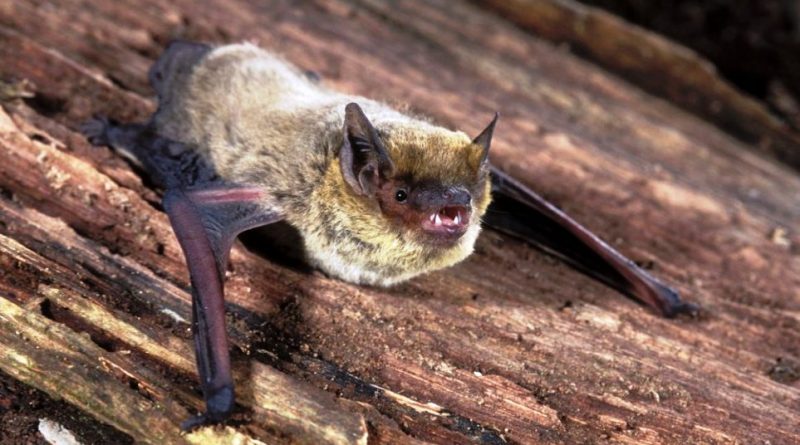Pipistrellus kuhlii
Pipistrellus kuhlii
The Kuhl’s pipistrelle (Pipistrellus kuhlii Kuhl, 1817) is a chiroptera belonging to the Vespertilionidae family.
Systematics –
From the systematic point of view it belongs to the Eukaryota Domain, Animalia Kingdom, Phylum Chordata, Mammalia Class, Laurasiatheria Superorder, Chiroptera Order, Microchiroptera Suborder, Vespertilionidae Family, Vespertilioninae Subfamily and therefore to the Pipistrellus Genus and to the P. kuhlii Species.
The terms are synonymous:
– P.aegyptius;
– P.albicans;
– P. albolimbatus;
– P.alcythoe;
– P. calcarata;
– P.canus;
– P.leucotis;
– P.marginatus;
– P. minute;
– P.pallidus;
– P.pullatus;
– P.vispistrellusi,
– Scotophilus lobatus.
– Taxonomy
Three subspecies are recognized of this species:
– P. k. kuhlii: present in Portugal, Spain, Balearic Islands, France, Corsica, Switzerland, Austria, Italy, Sicily, Sardinia, southern Germany, western Slovakia and Hungary, Slovenia, Bosnia and Herzegovina, Croatia, Montenegro, North Macedonia, Serbia, Albania , Greece, the islands of Crete and Rhodes, Cyprus, Malta, Bulgaria, central and eastern Romania, Moldova, central and eastern Ukraine, European Turkey, Armenia, Azerbaijan, Georgia, southwestern Russia, western Kazakhstan, Morocco, northern Algeria, Tunisia ; Northern Libya and Egypt;
– P. k. ikhwanius (Cheesman & Hinton, 1924): present in western, southern and north-eastern Anatolia, Saudi Arabia, United Arab Emirates, Qatar, Bahrain, northern Oman and western Yemen, Sinai Peninsula, Israel, Jordan, Lebanon, Syria, Iraq , Kuwait;
– P. k. lepidus (Blyth, 1845): widespread in the area of Iran, southern and northern Turkmenistan, south-central Uzbekistan, south-western and north-eastern Afghanistan, central Pakistan, the Indian states of Assam, Maharashtra, Meghalaya and western Bengal.
Geographic Distribution and Habitat –
The Kuhl’s pipistrelle is a common chiropteran in the Palearctic Ecozone and is found widely represented in North Africa, in Europe from Portugal to Kazakhstan, in the Arabian Peninsula in the Middle East up to India. An observation is also known in the southern Chinese province of Yunnan. In Italy it is present throughout the territory, including the islands.
Its habitat is mainly in urban environments, but also in woods, Mediterranean scrub, oases and steppes up to 2,000 meters above sea level, although the preferred maximum altitude is 700.
Description –
Pipistrellus kuhlii has a head-to-body length of 35-55mm, a tail length of 30-45mm, a foot length of 6 – 8mm, an ear length of 10 – 13mm, a wingspan of 20- 24 cm, for a weight of 5-10 grams.
It is recognized for its short, soft, dense and fluffy fur.
The dorsal parts vary from yellowish-brown in the subspecies P.k.ikhwanius to olive-brown or dark reddish-brown with the base of the hairs darker, while the ventral parts are slightly lighter and greyish.
The muzzle is broad, with two glandular masses on the sides.
The eyes are small.
The ears are brown or blackish-brown, narrow, triangular, well separated from each other and with a rounded tip.
The tragus is about half the length of the auricle, narrow, with the anterior edge straight, the posterior one strongly convex and with the rounded tip, while the antitragus is slightly developed.
The wing membranes are blackish-brown with the posterior border distinctly marked in white and attached posteriorly to the base of the toes.
The tip of the long tail extends slightly beyond the large uropathion, which can be blackish, brownish or light brown.
The limestone is long and carinated.
This bat emits high intensity ultrasounds in the form of pulses of intermediate duration with narrow band and final almost constant frequency of 35-40 kHz and with maximum energy at 42 kHz.
Biology –
In this species the females reach sexual maturity after one year of life. The mating period occurs in late summer or autumn.
The mothers give birth to two babies, more rarely only one, in the period from June to July.
Life expectancy is up to 8 years.
Ecological Role –
The Kuhl’s pipistrelle tends to form colonies often numerous formed by both sexes, in the interstices of buildings or constructions, more rarely in the cavities of the trees, under the exfoliated bark, in the rocky crevices and in the quarries or mines. It forms nurseries up to 100 females occasionally frequented by some males, which have the characteristic of being unusually quiet.
Use bat boxes. In the northernmost areas of the range it hibernates in the period from November to March – April, although it uses the same shelters as in the warmer seasons. In the other parts it is active throughout the year.
The predatory activity begins before sunset or sometimes even in broad daylight and continues until dawn, sometimes interrupted by two or more stops. The flight is fast and agile, with short glides and repeated circular routes.
This bat feeds on insects, particularly Diptera, Lepidoptera, Trichoptera, Beetle and Hemiptera, caught in flight around street lamps, near trees or above water.
According to the IUCN, there are currently no major threats (European Mammal Assessment Workshop, Illmitz, Austria, July 2006).
Among the conservation measures it should be noted that this species is listed in Appendix IV of the Habitats Directive (2/43 / EEC). Protected by the Bonn (Eurobats) and Bern Conventions. Considered Least Concern by the European Mammal Assessment (Temple & Cox 2007). It is present in protected areas.
Guido Bissanti
Sources
– Wikipedia, the free encyclopedia.
– Gordon Corbet, Denys Ovenden, 2012. Guide to the mammals of Europe. Franco Muzzio Publisher.
– John Woodward, Kim Dennis-Bryan, 2018. The great encyclopedia of animals. Gribaudo Editore.


